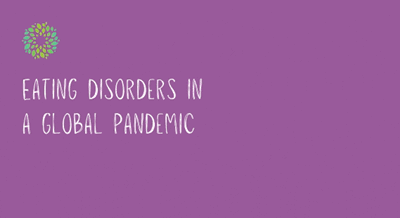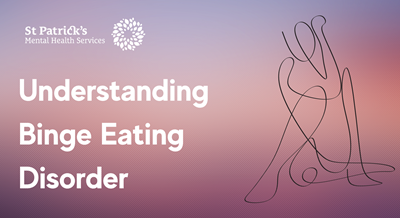
There are many supports and treatments available for people living with eating disorders recommended in various international best practice guidelines.
Traditionally, evidence-based practice was based on research findings. More recently, however, evidence-based practice is thought to include three different elements: clinical research, clinical experience and, importantly, patient experience.
While there can be differences between some international best practice guidelines, collectively, psychotherapy is found to be central to treatment for eating disorders. Some guidelines or recommendations suggest that the person is medically or nutritionally stable to get the most effectiveness from their treatment. Others recommend that medication, alongside therapies, can help to support people in their recovery.
Treatments for adults living with eating disorders, which are evidence-based and informed by international best practice, include:
- Maudsley Anorexia Nervosa Treatment for Adults (MANTRA)
- Compassion-Focused Therapy for Eating Disorders (CFT-E)
- Specialist Supportive Clinical Management (SSCM)
- Enhanced Cognitive Behavioural Therapy for Eating Disorders (CBT-E).
Below, members of our Eating Disorders Programme team give an overview of these five interventions for adults experiencing an eating disorder, outlining what these treatments look like and what they have to offer.
MANTRA
Dr Toni O’Connor, Advanced Nurse Practitioner, starts by introducing MANTRA, a relatively new treatment for people experiencing anorexia. It was first recommended in the National Institute for Health and Care Excellence (NICE), or United Kingdom (UK), guidelines in 2017. It is a flexible early intervention tool that can be used at any time a person presents with anorexia and can be used alongside other treatments, such as group work, if needed.
The foundations of MANTRA rest in theory and research, service users’ preferences, and clinical experience. It is a cognitive-intrapersonal treatment, which means it considers both a person’s thoughts and their relationships with others, in the context of their anorexia. Family, friends and carers can also be included, if the person so wishes.
Treatment is workbook-based, with the workbook being used both in therapeutic sessions and by the person at home, at a pace that’s suitable for them. The workbook is helpful in that it can be used as evidence of progress and the person can refer back to previous parts as they move through the MANTRA programme.
MANTRA begins by looking at the person’s motivation level and wish to change their behaviours. There can be a distinction between wanting to change and having the ability to change. The person assesses both when they start in MANTRA and, often, Dr O’Connor notes, people mark their ability to change lower than their wish to change. This is the key to the starting point for MANTRA – looking at what gets in the way of the person’s ability to change.
From here, MANTRA explores the focus areas that might be keeping a person stuck, including:
- Thinking styles, such as inflexible, perfectionistic styles
- Social and emotional styles; for example, avoiding emotions
- The value of anorexia to the person, such as a feeling of control, or a visible way of showing they are not ok
- Responses from others close to the person, and how the person makes sense of how other people react to behaviours related to their eating disorder.
Self-compassion is used in MANTRA as a way to help the person to move forward on these focus areas and progress their recovery.
MANTRA can involve between 20 and 30 sessions, depending on the person’s individual needs. Two carer sessions– or more, if needed – are included in the treatment, and up to four sessions with a dietician. Four follow-up sessions may also take place in the months after to check in and revisit some of the learnings from the programme.
People using the MANTRA approach for recover generally find it very easy to engage with, as it works at their pace and it doesn’t ask them to change – it’s asking them to be curious about change and to choose the level of change they want to achieve.
CFT-E
Dr Fionnuala McEnery, Clinical Psychologist, explores CFT-E, an intervention developed by Dr Ken Goss that can be helpful for people with all kinds of eating disorders.
Compassion-Focused Therapy (CFT) was specifically designed originally for people with chronic shame and self-criticism. Research shows these contribute to the development, maintenance and relapse of eating difficulties.
Levels of shame are higher in people with eating disorders than other clinical groups. Shame impacts on how the person sees themselves and how they think others see them, so they can view themselves as inferior to other people because of this. It can be triggered in a number of ways, such as through the person’s past experiences or through social expectations. For people with eating disorders, their eating behaviours – such as binging, purging or restricting - can also trigger a sense of shame. On top of this, the person can have a very harsh internal voice which can lead them to believe the cause of the shame is their fault and criticise themselves for this.
Compassion is seen as the antidote to shame and self-criticism, and can lead to changes in behaviour. In CFT-E, compassion goes beyond being kind to yourself – it’s about being sensitive to pain or suffering in yourself and others, and being deeply committed to trying to ease and prevent that suffering. It’s about asking whether you can turn towards the painful things in your life, including an eating disorder, and, in coming to understand it, make meaningful change.
In CFT-E, eating disorders are recognised as ways the person has developed to cope with distress or difficult life events. A lot of the work done through CFT-E is about understanding that so much of what happens in your life is not your fault, despite what shame and self-criticism might bring you to believe.
The first part of CFT-E involves developing a range of inter-related skills and attributes that help the person to work with the distress they have experienced, and find new ways of coping that are helpful, rather than harmful. It aims to help the person to develop tolerance for staying with sadness, upset or frustration and an empathetic, non-judgmental approach to their own difficulties.
The next part is about helping the person to use their new skills to make changes to their eating behaviours by:
- developing a compassionate mind in terms of reasoning and thinking,
- redirecting attention compassionately (such as moving attention from a preoccupation with size or shape)
- working on sensory aspects, where people are supported to experience their body as helpful
- using their voice and practice a new sense of courage
- learning how to seek support.
Changes are made in small steps so the person doesn’t feel overwhelmed, and so they have a sense of agency and ownership in the process. Recovery is both psychological and physical.
CFT-E is a group treatment, which is helpful for people in removing shame and building up social connections. Through the group, CFT-E aims to support the person to grow and flourish and to want the best for themselves and others.
SSCM
Dr Clare O’Toole, Consultant Psychiatrist, explores SSCM, which is an evidence-based treatment for anorexia nervosa. It can work particularly well for people who are less motivated to engage in active therapeutic processes and who want to work slowly towards progress.
SSCM involves clinical management, which is the disorder-focused aspect of the model. This includes normalising eating behaviours, encouraging the person towards weight gain, addressing the effects of eating disorders, and bringing in psychoeducation (or learning about mental health).
It also involves supportive therapy, which is the person-focused aspect of the model, looking at the life issues raised by the person. The therapist style is supportive and empathic, and involves active listening, open questioning and praise.
SSCM has a number of unique features, including that it:
- is person-centred, drawing on their strengths and values
- looks at target symptoms, while being inclusive of supportive therapy and clinical management
- involves a flexible therapy style that can be delivered by a number of clinicians with expertise in treating anorexia
- commits to reversing starvation by gently moving the person towards change
- commits to the therapeutic approach.
It can involve between 20 and 40 sessions over three key phases:
- engagement (assessment; agreement of goals, and so on)
- treatment (support, monitoring of symptoms, weight gain and more)
- termination and beyond (ending treatment, planning for the future).
CBT-E
Leah Hargadon, Cognitive Behavioural Therapist, discusses CBT-E, an intervention suitable for people going through all types of eating disorders. It is a flexible, highly individualised form of treatment which tends to focus on the “here and now”.
Cognitive Behavioural Therapy (CBT) involves exploring how our thoughts, physical sensations, emotions and behaviours all interact: they work together to create one experience. CBT helps us to break these down and understand them. It is a doing therapy, that focuses on behavioural change through exposure work and behaviour experiments. For example, for a person with an eating disorder, this might involve eating a certain food and understanding that this doesn’t cause something the person might fear, such as immense weight gain or uncontrolled eating. This means that, while the weekly CBT sessions are important in themselves, the work done between them is just as important for growth and true change.
CBT-E is a focused form of CBT for people living with eating disorders. CBT-E involves four stages over 20 to 40 sessions, which include:
- psychoeducation
- self-monitoring
- establishment of regular eating
- reflection and planning
- addressing body image; dietary restraint; and events, mood, and eating
- dealing with setbacks.
While the key element is about dealing with the person’s focus on shape and weight, broader work can also be done on other areas like perfectionism, low self-esteem, and relationships.
Continue to…
Meet our team: A psychiatric nurse in our adolescent services






